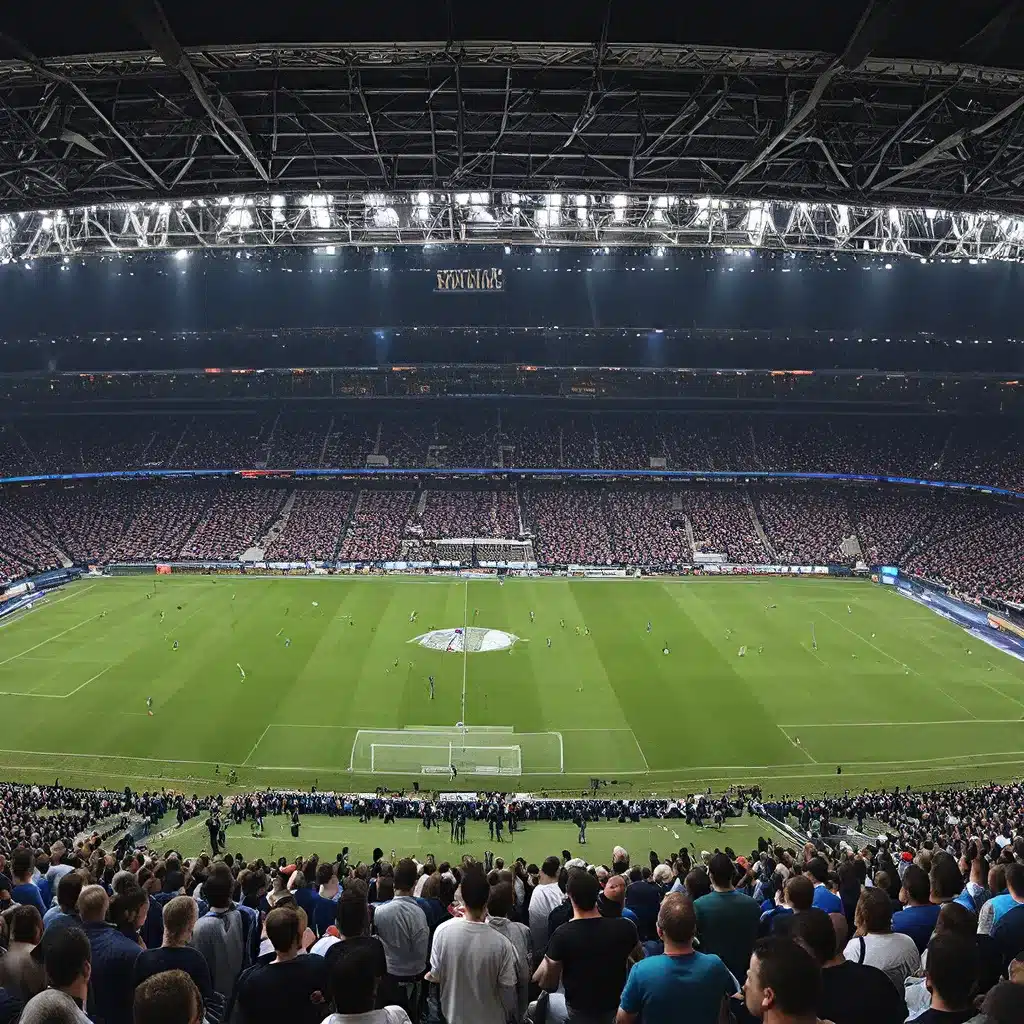
A Legendary Stadium’s Storied Past
Nestled in the heart of Saint-Denis, just north of Paris, stands the Stade de France, a colossal testament to the enduring spirit of French football. This iconic stadium has witnessed some of the most momentous events in the nation’s sporting history, from the triumphant victories of the national team to the electrifying atmosphere of international tournaments. As we step through its hallowed gates, we embark on a journey to uncover the echoes of glory that reverberate within its walls.
The story of the Stade de France began in the mid-1990s, when France was selected to host the 1998 FIFA World Cup. The decision to build a new, state-of-the-art stadium was made to accommodate the influx of fans and the global spotlight that would shine upon the country. Designed by the renowned architectural firm Macary, Zublena, Regembal, and Costantini, the Stade de France was conceived as a symbol of French pride and a testament to the nation’s prowess in the world of football.
Construction of the stadium commenced in 1995 and was completed in just two years, a remarkable feat of engineering and project management. The final result was a masterpiece of design, blending modern functionality with a touch of French elegance. The stadium’s striking silhouette, characterized by its distinctive arch, has since become an iconic landmark, recognized by fans and visitors alike.
The Roar of the Crowd and the Magic of Legends
The Stade de France’s inaugural event was a thrilling match between France and Spain on January 28, 1998. As the tricolor-clad supporters filled the stands, the air was electric with anticipation. When the final whistle blew, the French team had emerged victorious, setting the stage for the incredible journey that would unfold in the months to come.
The 1998 World Cup was a watershed moment for French football. The national team, led by the likes of Zinedine Zidane, Didier Deschamps, and Thierry Henry, captivated the world with their skill, passion, and determination. The Stade de France became the epicenter of this historic triumph, hosting several key matches, including the final, where France defeated Brazil in a resounding 3-0 victory.
The roar of the crowd, the collective ecstasy of a nation, and the virtuosity of the players on the pitch all combined to create an unforgettable spectacle. Emmanuel Petit‘s last-gasp goal, Marcel Desailly‘s impenetrable defense, and Zidane‘s mesmerizing performances etched their names in the annals of French football history, forever intertwining the Stade de France with the glory of that fateful summer.
A Beacon of Sporting Excellence
The Stade de France’s impact on French football extends far beyond the 1998 World Cup. It has continued to host some of the most significant sporting events in the country, cementing its status as a beacon of excellence. The stadium has been the venue for numerous UEFA European Championship matches, including the final in 2016, where Portugal emerged victorious over the host nation.
In addition to the international stage, the Stade de France has also played a vital role in the domestic league. It has hosted the Coupe de la Ligue final, the French equivalent of the League Cup, as well as the prestigious Coupe de France final, the country’s primary domestic cup competition.
The stadium’s versatility extends beyond football, with it also serving as a venue for other major sporting events, such as rugby union matches, athletics competitions, and even American football games. The NFL International Series has graced the Stade de France, further cementing its status as a true multipurpose facility.
A Beacon of Inspiration
The Stade de France’s significance transcends the realm of sports. It has become a symbol of national pride and a beacon of inspiration for the people of France. The stadium’s architectural grandeur and its ability to bring together fans from all walks of life have made it a cherished landmark, not just for sports enthusiasts, but for the nation as a whole.
Beyond its sporting legacy, the Stade de France has also played a role in the cultural fabric of the country. It has hosted music concerts by some of the biggest names in the industry, from U2 to Beyoncé, further solidifying its status as a premier event venue.
The stadium’s impact on the local community has also been profound. It has become a hub for educational initiatives, with programs aimed at promoting youth development and social inclusion through the power of sports. The Stade de France’s commitment to giving back to the community has earned it a reputation as a force for positive change, inspiring generations of young people to pursue their dreams.
Echoes that Resonate Through Time
As we stand within the Stade de France, the echoes of its storied past reverberate through the air. The roar of the crowd, the triumphant goals, and the legendary moments that have unfolded here continue to captivate and inspire. It is a place where the spirit of the game is celebrated, where passion and pride converge, and where the enduring legacy of French football is woven into the very fabric of the stadium.
The Stade de France’s legacy is not just a testament to the power of sports but also a reflection of the French people’s unwavering spirit. It stands as a symbol of unity, a gathering place where differences are set aside and a shared love for the beautiful game takes center stage.
As we explore the Stade de France, we are not just witnessing a stadium – we are immersing ourselves in history, connecting with the stories that have unfolded within its walls. It is a place where the echoes of glory never fade, where the legends of the past continue to inspire the present and future generations.
So, let us venture forth and discover the wonders of the Stade de France, a monument to the enduring spirit of French football and a testament to the power of sports to unite, inspire, and captivate the world.

